UNESCO INTERNATIONAL CONFERENCE Samarkand city, August 26, 2019
2019年8月26日、UNESCOの国際会議にて行ったプレゼンテーションの内容です。
Prof. Koji Shibazaki, Faculty of Art, Aichi University of the Arts, Japan
The Outline of the Lecture at the INTERNATIONAL CONFERENCE Samarkand city, August 26, 2019
Slide 1,
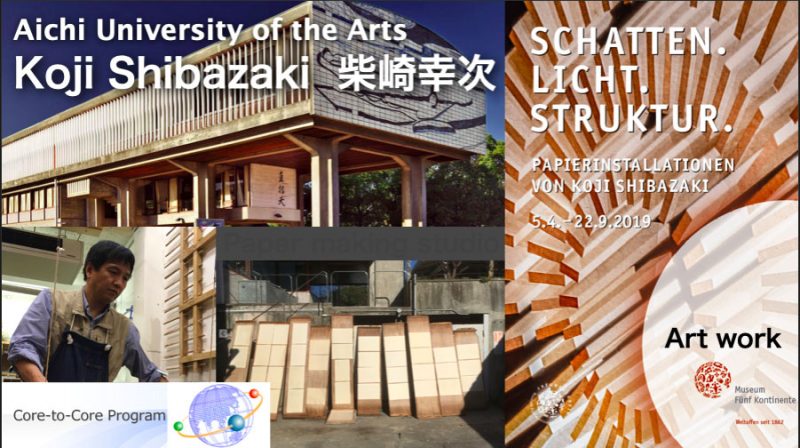
I am Koji Shibazaki from Aichi University of the Arts, in Japan. Thank you very much for inviting me. My specialty is Paper Artworkand Hand-Made Paper research. This is the poster for my exhibitionin Germany, the University building, and Paper making studio.
Slide 2,
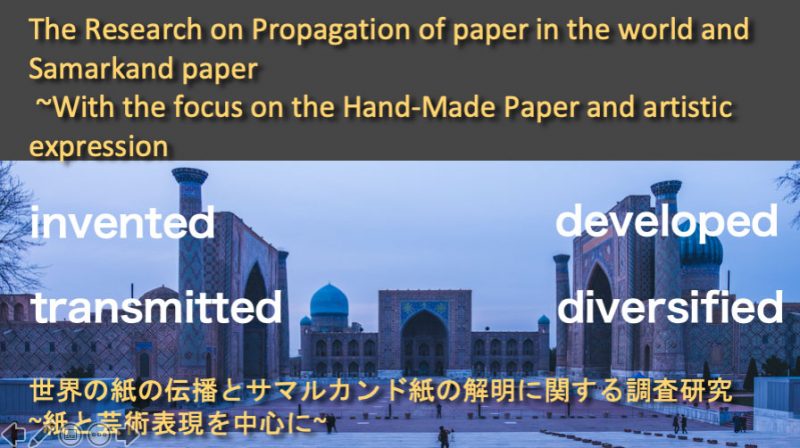
There are various paper cultures in the world, some stretching back into ancient times.“Paper” and the techniques to produce it, have repeatedly been invented, developed, transmitted, and diversified. It can certainly be called an important medium in human cultural formation. However, “Handmade Paper” culture, which has existed and been passed down since ancient times, is in decline worldwide. This is a result of changes in world economics and the new realities of demand and mass production in our era of the modernization of all elements of daily life.
Slide 3,
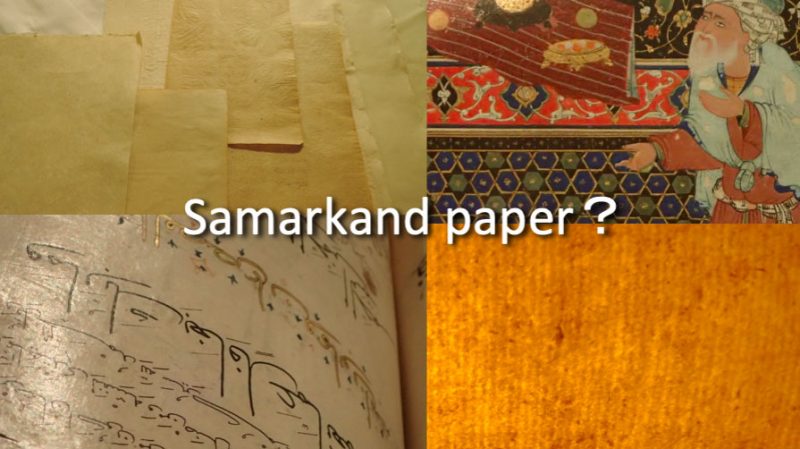
In Uzbekistan, in the ancient city of Samarkand, there was a paper made by the techniques which were brought westward from China. This was in the late 8th century. It was a very beautiful paper used for calligraphy and the painting of miniatures using a hard writing pen. In Samarkand, paper-making production was further developed and from there the techniques began their journey to the West.
Slide 4,
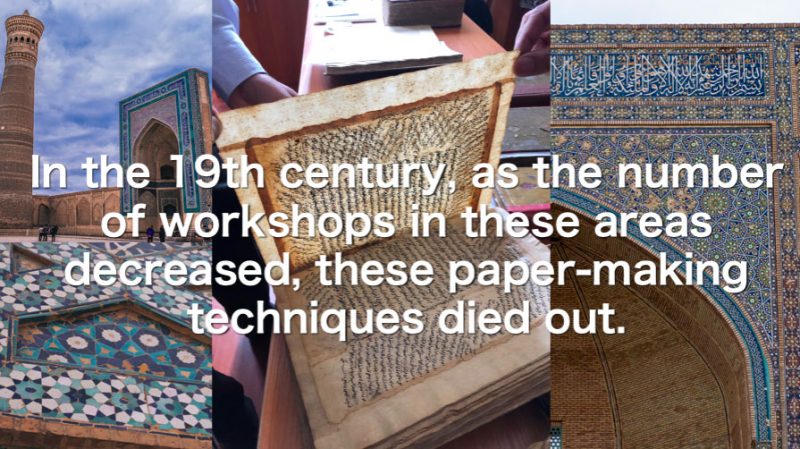
It should be noted that paper culture was also located in other areas of ancient Uzbekistan―both the Kokand and Bukhara regions. In the 19th century, as the number of workshops in these areas decreased, these paper-making techniques died out. Thus, it is very difficult for us to know much about the history and manufacturing methods of this paper.
Slide 5,
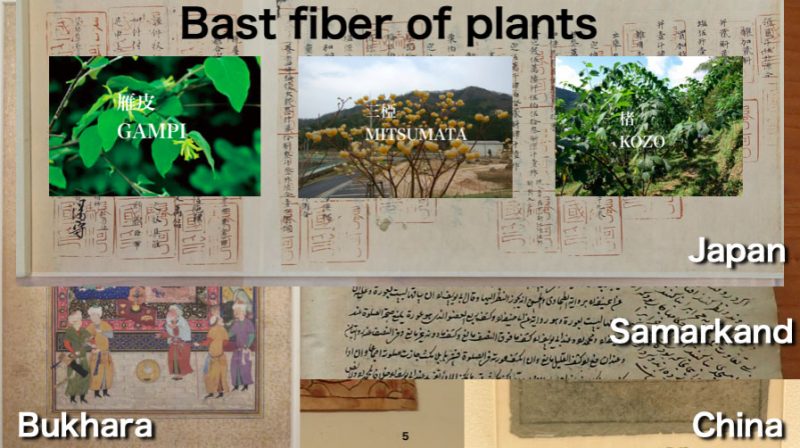
If we turn our attention to the paper making techniques that sprang up in East Asia, namely China and Japan, we find that they developed along with the search for the bast fiber of plants to be used as raw materials, the standardization of paper, and the search for processing the paper on which the ink does not ooze, along with the artistic expression that was associated how the paper was to be used. However, producing “Handmade Paper” has continued to decline also in East Asia, and the historical facts of the paper making method are not clear any more.
Slide 6,
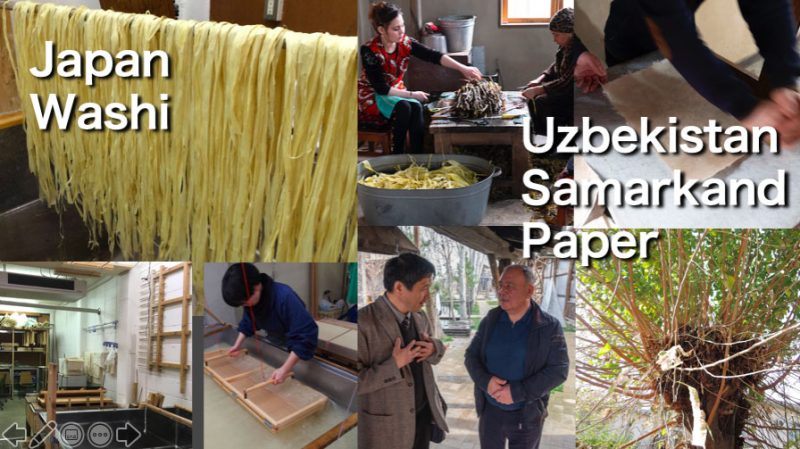
We believe that paper culture is important, and likewise that it is important to gain a deeper understanding of the history and techniques related to it.
Pre-modern paper production were based on what we choose to call ‘human power” as well as “natural power.” Hidden within paper culture is a combination of historical development and regional civilization that we hope our research can help shine a light on.
Slide 7,
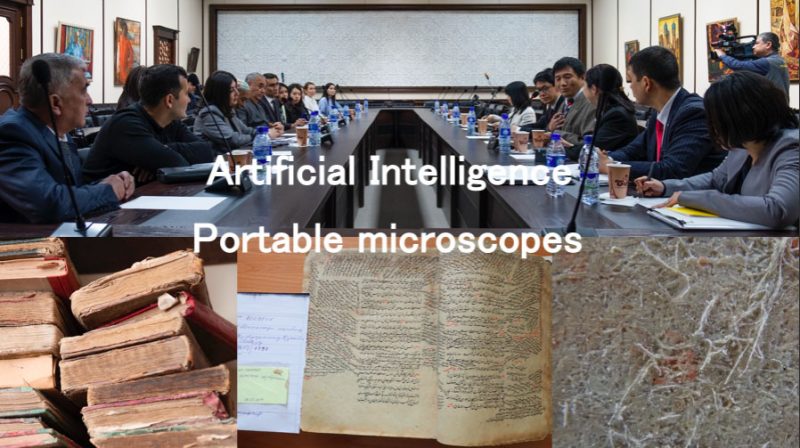
For three years, our research group has been attempting to bring to light the genius of ancient Samarkand paper. We have focused on this type of Uzbek paper and how it eventually spread to other places in the world.
Using highly sophisticated portable microscopes in addition to so-called “deep learning” borrowed from the world of artificial intelligence, we are able to view fiber of ancient paper much better than ever before. Thus, we are gaining a better understanding of not only the raw materials used but of the methods of manufacture that workers employed.
Slide 8,
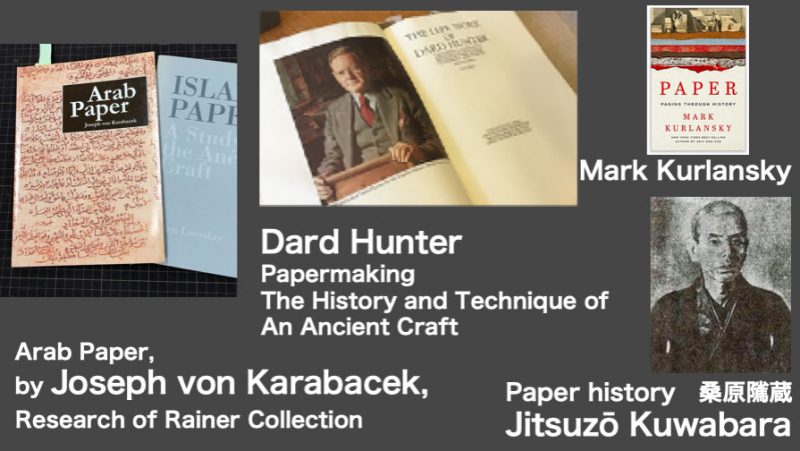
Now, I would like to discuss how Samarkand paper spread beyond the borders of Uzbekistan.
In our research we have found various things that contradict the previously accepted historical narrative concerning the spread of paper making.
As far as the study of paper goes, several publications are well known: “Papermaking: The History and Technique of an Ancient Craft” by Dard Hunter; “Arab Paper” by Joseph von Karabacek; “The World History of Paper” by Mark Curlanski; and “Kami no Rekishi” by Jitsuzo Kuwabara, in Japan.
One important problem that we have faced is that much of what has long been considered the standard “history” is simply based on legend and speculation. Or to put it another way, much of what is written about paper lacks solid scientific analysis.
For example, currently there is a theory that the main raw material of Samarkand paper was mulberry. As a result of our investigation, however, we have found that cotton and hemp were mostly used. And surprisingly, we have not yet discovered any mulberry in Samarkand paper.
Slide 9,
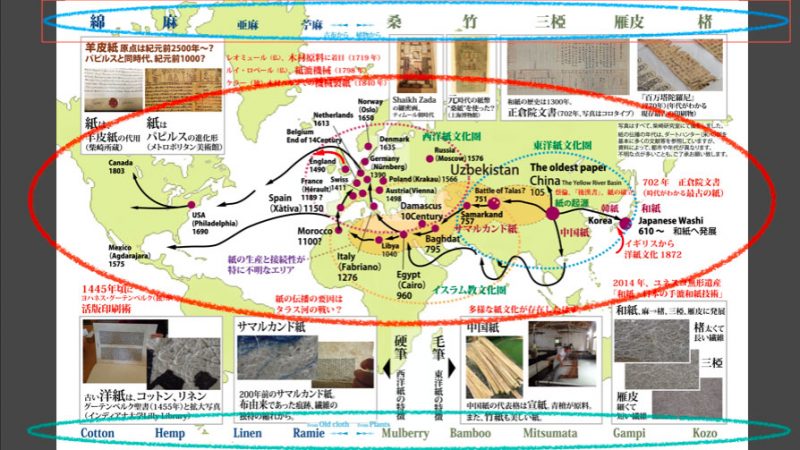
At this time, I would like to ask you to take a look at the card everyone has received. Having referred to many different sources, I designed this card as an infographic of the spread of paper throughout the world.
The red line shows the worldwide spread of paper.
The upper and lower blue lines indicate the types of raw materials used. The nature of a paper changes greatly depending on the raw material used in its manufacture.
Slide 10,
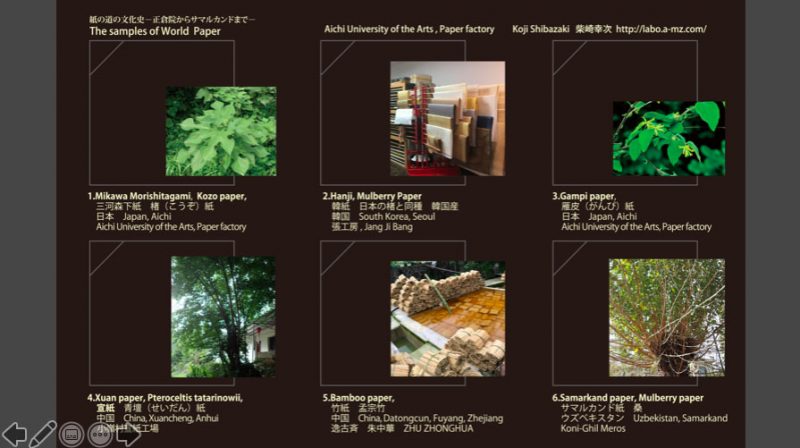
Look at the back side.
Slide 11,
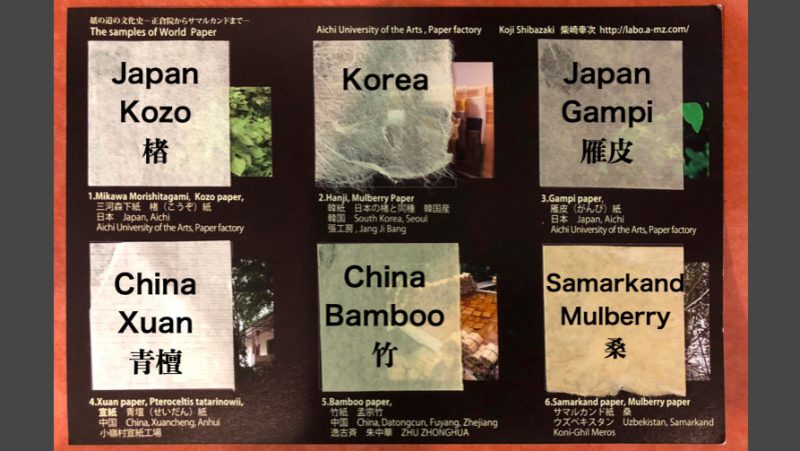
This is a Modern paper sample. Japanese Kozo. Korean mulberry paper. Japanese Gampi(Daphne(plant)). Chinese paper, Xuan paper. China, Bamboo paper, Samarkand Mulberry paper,
Slide 12,
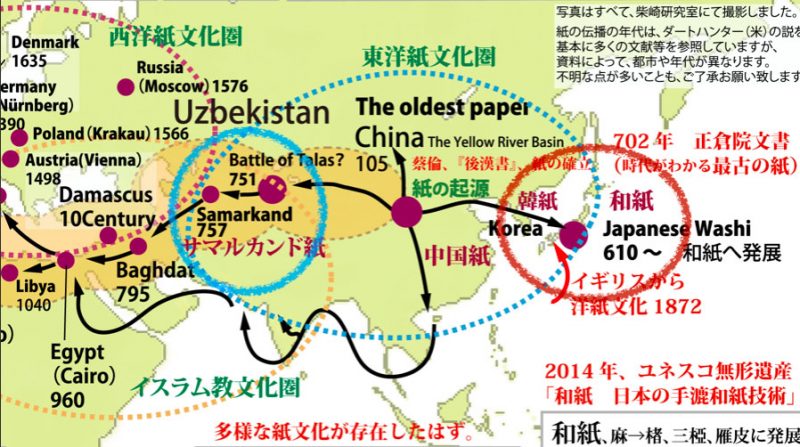
First, let’s briefly look at the story of the spread of paper. Paper was originally invented in China. Cai Lun (in Japanese, Sai Rin) is regarded as the inventor of paper and the paper-making process. However, paper has been found that was produced before his time and there are various theories that explain this fact.
Also, it is usually said that paper-making methods came to Japan from the Korean Peninsula in 610.
In the West, it is often said that an important paper-making method was spread by Chinese prisoners who were captured at the Battle of Talas River in what is now known as Kyrgyzstan. This was when the Tang Dynasty was defeated by the Abbasid Caliphate along with their ally the Tibetan Empire in 751.
There is another theory that paper-making methods had already been transmitted before the Battle of Talas River. In any event, it is often saidthat a paper mill using hydropower was in operation in Samarkand as early as 757.
In any case, a paper-making technique was making its way from this area into Islamic cultural spheres.
It is believed that it was transmitted to Baghdad in 795 and later to Damascus in the 10th century.
Slide 13,
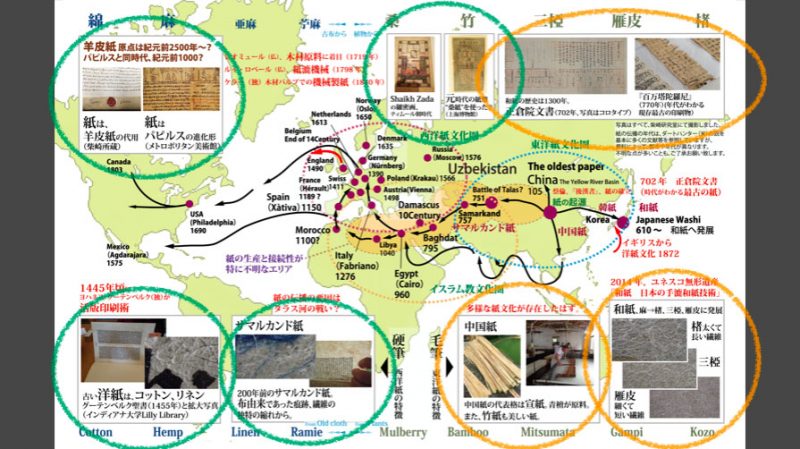
The upper and lower pictures are various themes related to paper.
This is a Japanese document called “The Shosoin Manuscript.” It is the oldest known example of actual paper and is 1,300 years old.
The woodblock printed paper scroll“Hyakumanto Darani,” or the “One Million Pagodas and Dhahrani Prayers,” is considered the world’s oldest verifiable printed matter today.
Regarding Japanese paper – Washi, it was inscribed as “Washi, craftsmanship of Japanese traditional hand-made paper” in 2014 on the Representative List of Intangible Cultural Heritage of Humanity by UNESCO.
Slide 14,
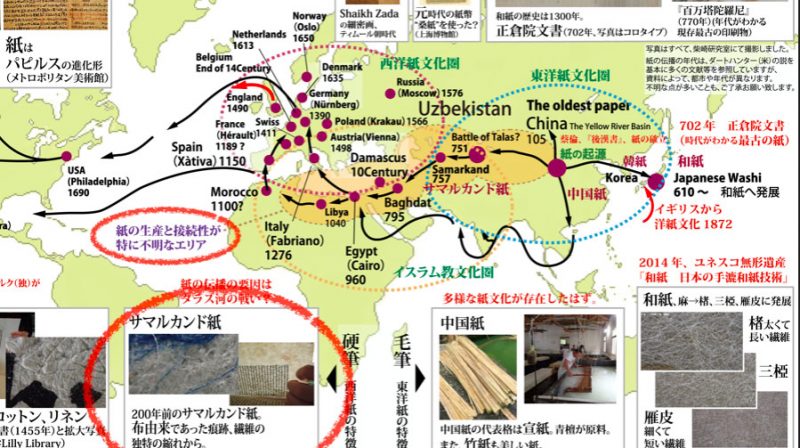
This is Samarkand paper which was made 200 years ago. There is evidence of it being produced from cloth, probably either cotton or linen.
In the Samarkand Paper Workshop, which is currently operated with funds from UNESCO and JICA, the raw material for the paper comes from mulberry bast fibers. Although no evidence has been found yet, there is a legend, saying that ancient Samarkand paper was made of mulberry.
There are many other parts of the history of paper in the world that remain unclear.
Slide 15,
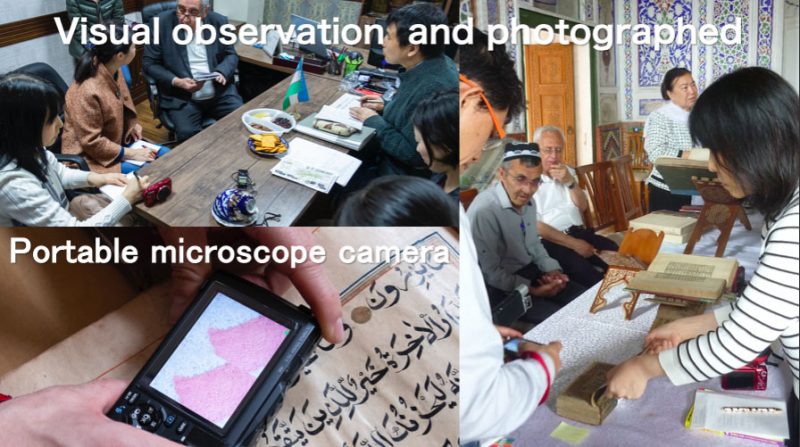
In an effort to clarify the history of paper-making in Samarkand, therefore, my Japanese research team is working for international joint research projects.
Our research method generally takes the following steps:
・At the first stage of our survey, paper documents, whose age is clear, are photographed by visual observation and a portable microscope camera. Fiber images of paper are collected as many as possible to create a data base.
Slide 16,

At the second stage of the survey, we will learn the characteristics of paper contained in the data by deep learning of these images and proceed to classify them into types.
At the third stage, scientific analysis is performed on paper; we remove and analyze fibers, such as broken parts, fiber characteristics, and contaminants. This will allow for the raw materials to be identified.
We will continue to correlate the information gained from the above-mentioned steps of survey with paper analysis data by using deep learning.
Slide 17,
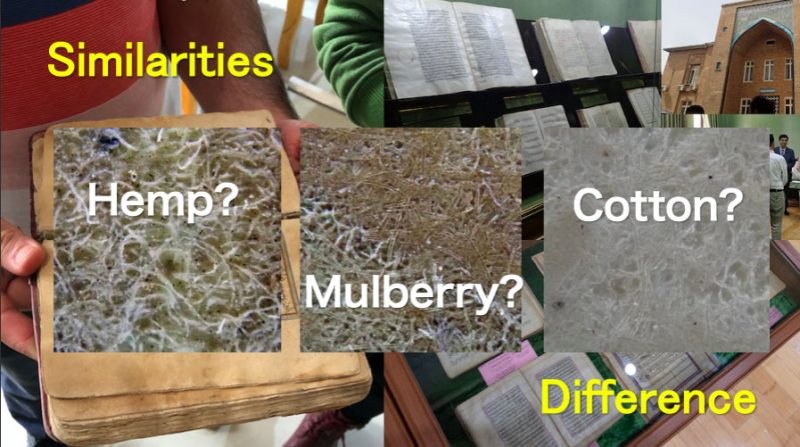
Our research has just begun. Of this we are certain: that only by photographing with a portable microscope camera will the historical roots of the paper of the world and the similarities and differences of the many early types of paper technologies be brought to light.
We are delighted that the methods we are using in museums to distinguish the varieties of paper and their different compositions do not bring any harm to the important and delicate examples of ancient paper. And we believe that our efforts will encourage others around the world to investigate the mysteries of our common historical heritage.
Slide 18,
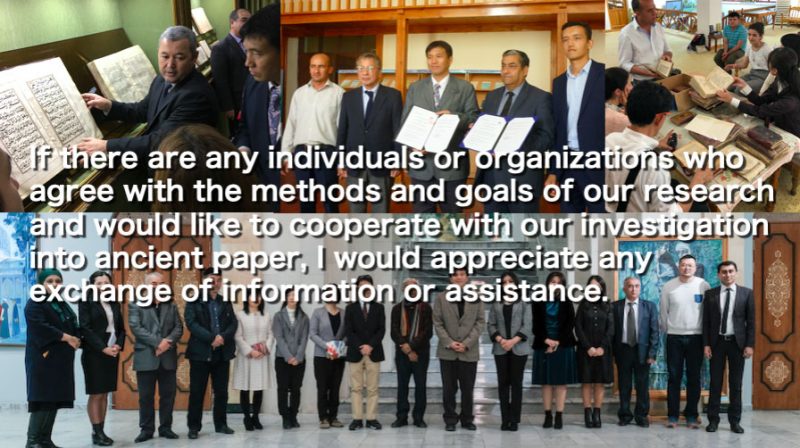
I would now like to conclude my presentation. If there are any individuals or organizations who agree with the methods and goals of our research and would like to cooperate with our investigation into ancient paper, I would appreciate any exchange of information or assistance.
以下、会議の風景

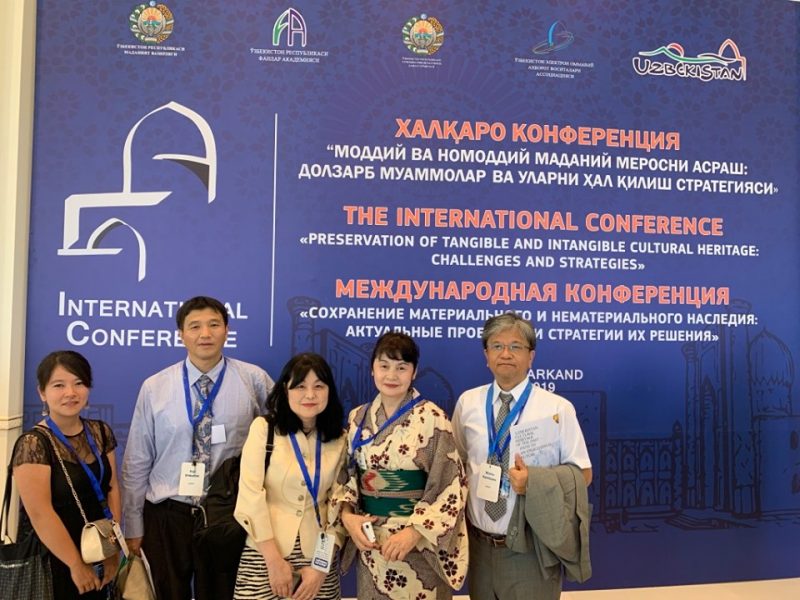
(Translated by Fujiko Kinugawa-Kluehspies)
国際会議のサイト http://icch.uz/en/